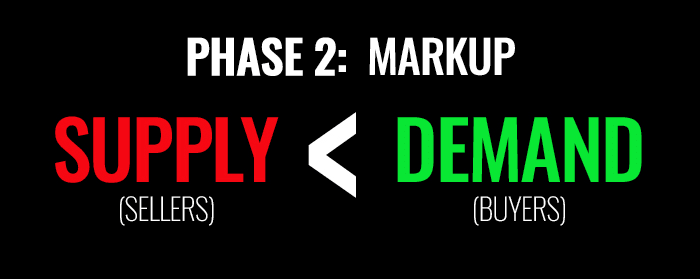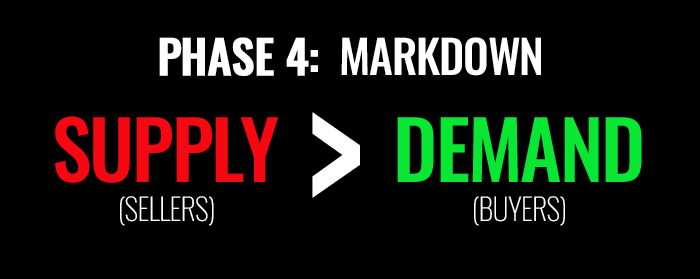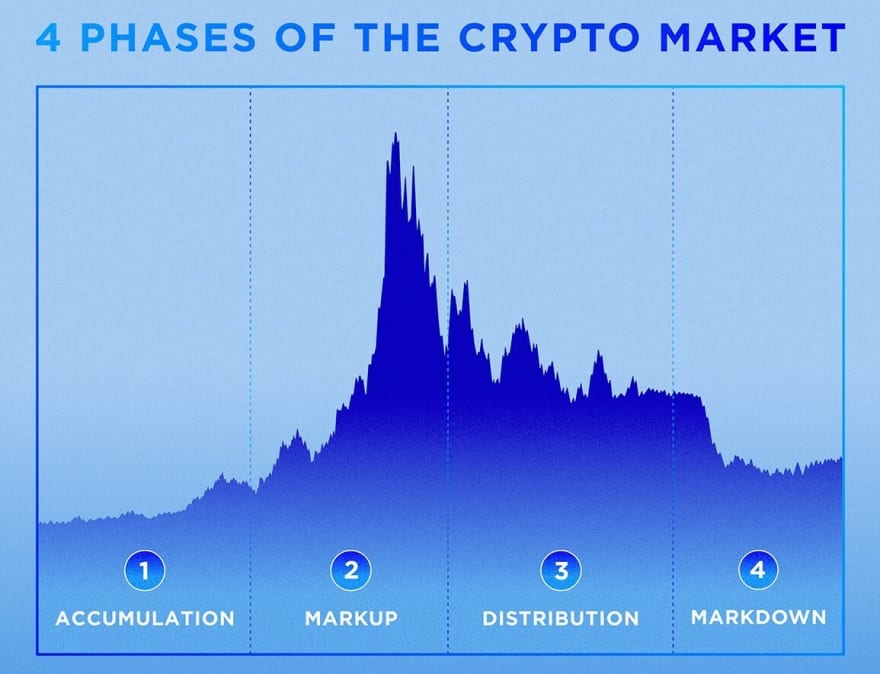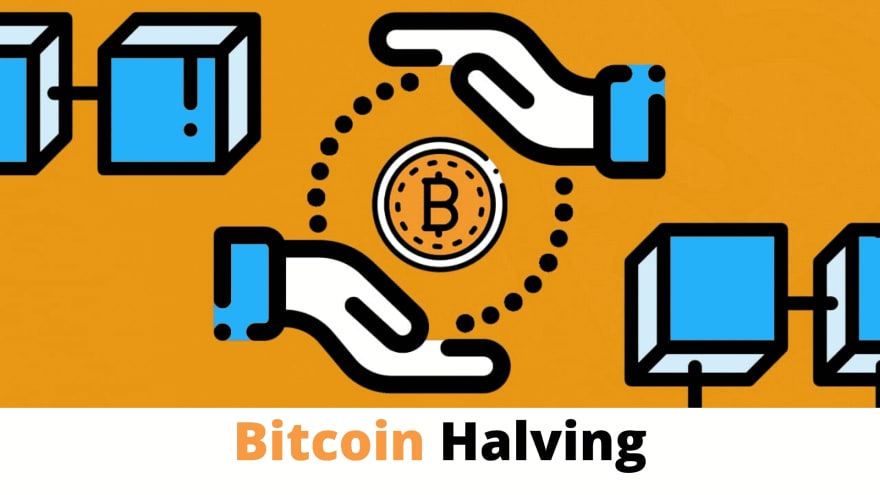A crypto market cycle typically consists of four different phases of price trends that are caused by several types of external factors. Here is what they look like and how to take advantage of them.
Takeaways
- A crypto market cycle consists of four phases - accumulation, markup, distribution, and markdown
- Each crypto market cycle last four years on average
- The main factors that affect a crypto market cycle include its correlation with Bitcoin, the halving of Bitcoin, and social metric
What Does the Crypto Market Cycle Look Like?
At a high level, market cycles are specific patterns that typically emerge from the psychology of market participants and the greater economic environment. This is a natural phenomenon that occurs in every market, and the crypto market is no exception.
Crypto market cycles start with little to no interest in the market. However, as more interest and demand arise, asset prices generally rise to keep up with the increasing demand. At some point, prices reach a peak and eventually start to drop, as interest declines and supply outweighs the demand. At the end of each cycle, a new cycle begins.
Although it is difficult to pinpoint the start or the end of a market cycle, most cryptocurrencies (excluding stablecoins) go through similar stages. Understanding the characteristics of each stage and how a typical user may approach each of these stages can help you to participate in the market in a more informed way.
The Accumulation Phase
Accumulation is the first phase of every market cycle. It starts after the end of the previous cycle when sellers have exited the market and prices are perceived to begin stabilizing.
In this phase, the market volume is typically lower than average, as interest in the market remains low. Therefore, no clear trend emerges, and assets typically trade within a tight range.
Characteristics:
- Market sentiment is dominated by disbelief and uncertainty
- Low price volatility
- Low trading volume
The accumulation phase is also known as a consolidation phase, which generally marks the end of the downtrend. Some market participants may still consider it an uncertain time to enter the market, as it can be hard to deduce whether the asset will continue trending lower. But from another perspective, longer-term holders often look at the accumulation phase as the precursor to what they hope will be the start of a bull market.
This period is especially attractive for long-term users who are looking to buy and hold. For short-term traders, however, patience is key, as this phase can last anywhere from weeks to months or even years. At this point, positive news relating to the market circumstances at large can capture market participants’ attention and potentially push the market into the next phase — the markup phase.
The Markup Phase
Commonly referred to as the bull market phase, the markup phase is when the market moves higher in price at an increasing rate. During the markup phase, new groups of market participants enter the market, and with that generally comes a notable increase in volume at the beginning of this phase.
From a market sentiment standpoint, despite still being cautious, market participants start becoming optimistic about the outlook, as companies and press begin publishing positive headlines.
The demand for an asset begins to outweigh the supply, causing prices to appreciate in value as a result.
Characteristics:
- Market sentiment is dominated by optimism and excitement
- An up-trending price chart
- Increase in trading volume
- Favorable economic conditions
The markup phase may be a good time for new participants to enter the market, as the upward price movement is much easier to recognize. Additionally, dips or pullbacks in the markup phase are mostly considered by many as an opportunity to buy, rather than a caution signal.
However, despite the overall optimism in the markup phase, assets will not necessarily increase in price. Not all assets follow the overall trend, and some may still be affected by negative news particular to them, which may cause their price to go against the general trend.
The Distribution Phase
At some point, after a bull run, some buyers become sellers. This is the distribution phase, where the buyers and sellers in the market are at equilibrium.
On one side, there are market participants who are still looking to buy, as they have confidence that the bull market is not over. On the other side are sellers, who are looking to lock in their profits. This creates tension between the bulls and bears. While this phase of the market still sees high trading volume, asset prices generally fluctuate within a limited range until either the bulls or bears surrender.
As a result, this phase may cause the overall market sentiment to turn from optimistic to a separation between greed and fear, with the prevailing uncertainty of whether the uptrend will continue or if a bear market is coming. The fear and greed index is a common indicator used by analysts to gauge this change in overall market sentiment.
Characteristics:
- Market sentiment is simultaneously coloured by overconfidence, greed, and uncertainty
- Low price volatility
- Elevated trading volume, but without an increase in price
The distribution phase is also the first sign of weakness after a bull market. In turn, this can lead some to deduce that a further downtrend might be coming.
During this time, some participants who bought an asset prior to or at the beginning of the markup phase may begin liquidating their positions in preparation for what they perceive to be an upcoming bear market, also known as the markdown phase.
The Markdown Phase
The markdown phase, or the bear market, is the scariest phase for most market participants. It starts as soon as the supply exceeds the demand in the distribution phase, and is a period that’s fueled by fear in the market, as the outlook becomes increasingly negative.
The more that participants begin fearing the upcoming state of the market, the more the selling pressure builds. In some situations, this cascading effect can send prices of an asset to levels not seen since the markup phase.
From a technical perspective, the markdown phase is defined by a downtrending chart and a high volume price decline. From a market sentiment perspective, it begins when news articles turn negative, with words like ‘recession’ in their title.
Characteristics:
- Market sentiment is dominated by anxiety and panic
- Downtrending price chart
- Elevated trading volume
- Unfavorable economic conditions
The markdown phase is a short seller’s dream, and the period where they stand to gain from the market drawdown. In this period, even good news can have trouble pulling an asset out of a downtrend, as participants adopt a cautious approach to avoid losses in the current harsh market climate.
But there is light at the end of the tunnel because markdown phases don’t last forever. At the end of this phase generally comes the new crypto market cycle. What lies around the corner might be yet another markup phase.
How Long is a Crypto Market Cycle?
Despite its young history, crypto has already seen several market cycles.
One of Bitcoin’s first market cycles came in 2013, where, in just a few months, the asset went from US$150 in its accumulation phase to over US$1,150 at the peak of the markup phase. It eventually slumped back to US$250 in the markdown phase in early 2015.
The next cycle kicked off in 2017: starting at around US$1,000 and climbing to a peak of US$19,000 by the end of the year, only to return to a low of about US$3,700 by the end of the markdown phase.
In both examples, it took the asset roughly four years to complete a market cycle; hence, the conclusion that an average crypto market cycle takes four years. However, be wary when making decisions based on this data, because it is based on a very small sample set and there may be black swan events that the industry hasn’t seen.
Factors That Affect a Crypto Market Cycle
In traditional finance, the factors that affect a market cycle are synonymous with the factors that might cause a bull or bear market.
These are:
- Political sentiment
- Supply and demand
- Fiscal and monetary central bank policies
- Corporate performance data
- Technical indicators
The cryptocurrency market, however, has historically seen additional unique features:
Bitcoin Halving
The technological advancements behind a cryptocurrency can often become the catalyst for the start of a markup or markdown phase for the asset. For instance, the Bitcoin halving.
This process involves the halving of rewards for Bitcoin miners after every 210,000 blocks. In layperson terms, it reduces the rewards for mining on the Bitcoin network, and in return, limits the supply of new Bitcoins.
Because of this, if the demand remains strong, it will generally push the Bitcoin price higher due to the perceived lack of market supply. Historically, Bitcoin’s halving has always created a new markup phase, making it a good indicator in which to pay attention.
Bitcoin Correlation
It is worth noting that, regardless of the niche of a crypto asset (except stablecoins), most share a strong correlation with Bitcoin, which occupies 54% of the entire crypto market capitalization (at the time of writing). Hence, if there are no strong catalysts, the market cycles of smaller crypto assets are likely to resemble the market cycle of Bitcoin.
Social Media Influencers
The worst of the worst or the best of the best? Depends when you got on the train.. An interesting observation of many minor cryptocurrencies is that, due to their small market cap, their prices can be affected significantly by influencers. One of the biggest influencers is Elon Musk.
In February 2021, the meme coin Dogecoin (DOGE) surged over 50% immediately after Musk tweeted about it. On another occasion, after Musk was asked how many Shiba Inu coins (SHIB) he owns, to which he then replied “none,” the cryptocurrency suffered a 20% decline in market value.
Although social metrics are hard to measure or predict, crypto assets have a tendency to fluctuate based on tweets or other forms of social media engagement from influential figures.
How Can Users Take Advantage of Market Cycles?
Although market cycles are fairly simple to understand, crypto assets are still a new asset class with new underlying technology. This can add multiple layers of complications when trying to ascertain where the market currently stands with regard to the crypto cycle. To add, market cycles may not always have the same patterns, and market participants typically cannot tell until looking back in retrospect.
Understanding that markets are cyclical — and managing your portfolio so that it accounts for markdown phases — can help ensure that you won’t be caught off guard. As much as we’d all like our assets to only increase in price, market cycles are ultimately inevitable.
Due Diligence and Do Your Own Research
I CAN NOT STRESS THIS ENOUGH! All examples listed in this article are for informational purposes only. You should not construe any such information or other material as legal, tax, investment, financial, or other advice. Nothing contained herein shall constitute a solicitation, recommendation, endorsement, or offer by myself to invest, buy, or sell any crypto assets.
I am not a financial advisor.
Returns on the buying and selling of crypto assets may be subject to tax, including capital gains tax, in your jurisdiction etc, etc, etc.
Past performance is not a guarantee or predictor of future performance. The value of crypto assets can increase or decrease, and you could lose all or a substantial amount of your purchase price. When assessing a crypto asset,
It’s essential for you to do your research and due diligence to make the best possible judgement, as any purchases shall be your sole responsibility.
Thanks for stopping by and I hope this helped you better understand the crypto market phases!














Top comments (0)